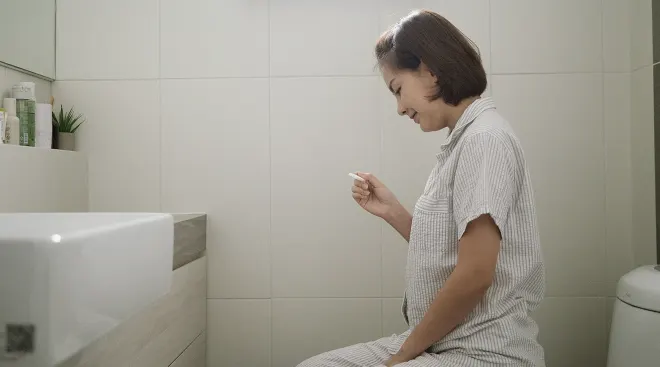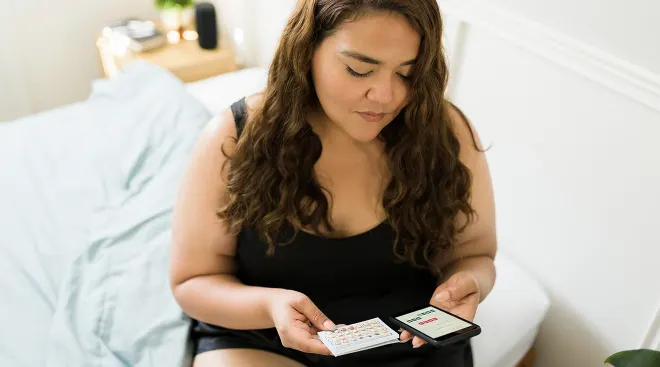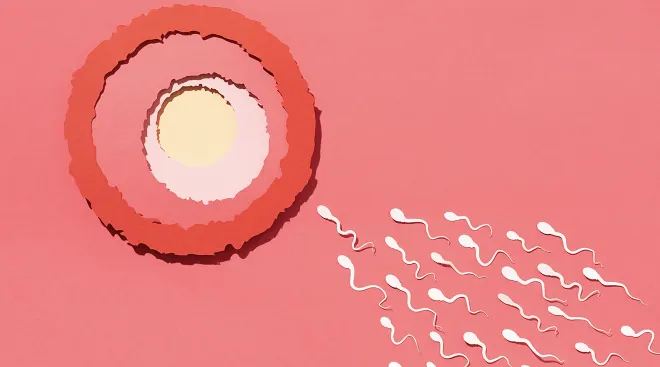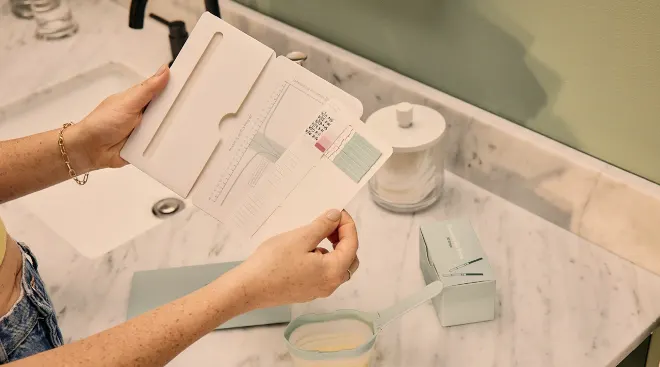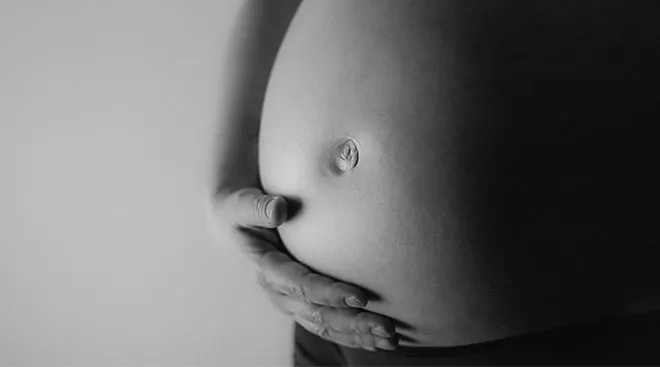What to Know About Ovulation Pain When You’re Trying to Conceive
As with those pesky monthly periods, ovulation feels different for different people. Some women experience ovulation pain every cycle; others, not at all. While being aware of any aches or cramping you feel during ovulation can be only somewhat helpful in tracking your fertility (more on that later), it’s just smart to get familiar with how your body feels from month to month, so you can separate what’s normal for you from what might require a visit to the ob-gyn. To that end, we asked experts to answer some of the most common questions about ovulation pain—from how long it lasts and what it means for pregnancy, to how to find relief and when to seek help.
Ovulation pain, also known as mittelschmerz (that’s German for “middle pain”), occurs at the midpoint of your menstrual cycle when your ovary releases an egg. Only about 20 percent of people who ovulate will feel this type of pain, says Katharine O’Connell White, MD, vice chair of academics in the department of ob-gyn at Boston Medical Center. “Most will feel it only occasionally, but some might feel it every cycle."
As for what causes ovary pain during ovulation, doctors aren’t completely sure, but they’ve got a few theories. “The pain could be related to the ovarian follicle stretching your ovary before it bursts, or from the blood or fluid that is released from the follicle that irritates the lining of your abdomen or pelvis and causes pain,” says White.
Any ovulation cramps might also be the result of contractions of the fallopian tube that move the egg towards the uterus, or from the ligaments around the uterus that contract, thanks to the increased levels of prostaglandins. “These are the same [culprits] behind menstrual cramping," White explains.
You’ll usually be able to distinguish ovulation pain from that of other conditions because it appears on either the left or right side of your pelvis. “If you ovulated from your left ovary, you’ll feel a cramp on the left side of your lower abdomen, and you may feel pain on a different side each month if your ovaries are taking turns releasing an egg,” White explains. Then again, you might not feel ovulation pain at all, which is completely normal too.
What does ovulation pain feel like? The symptoms can vary slightly from person to person. It can range from a slight twinge or a sharp pain to a general sense of discomfort or full-on cramping during ovulation. But most often, says White, it feels "dull and achy, just like menstrual cramps.” Some women may also notice vaginal spotting or discharge in conjunction with the pain.
Ovulation cramps vs. implantation cramps
If you’re trying to conceive, you might be keeping tabs on any sign of implantation cramping, a sign of pregnancy. The difference between ovulation cramps vs. implantation cramps is a matter of timing. "Ovulation cramping happens about 14 days before you would start your period, which would be day 14 if your cycle is 28 days,” White explains. But with implantation cramping—which happens when a fertilized egg, traveling from the fallopian tube, burrows into the uterine lining—you’d feel it about a week later, usually around day 20 to 22 if your cycle is 28 days long.
Can ovulation cause other types of pain?
It’s quite possible you’ll feel achy in other parts of your body during ovulation. Here’s a breakdown of some other types of ovulation pain that extend beyond your pelvic area.
• Breast and nipple pain during ovulation. This type of pain can’t be blamed on the physical occurrence of ovulation directly. That’s because ovulation pain happens because the egg is leaving the follicle, so it’s isolated to the pelvic area, explains Kameelah Phillips, MD, IBCLC, founder of Calla Women’s Health in New York City. Rather, women may feel nipple and breast pain during ovulation due to the hormones your body releases at this time.
• Back pain during ovulation. It’s not your imagination: ovulation can trigger back pain. “Ovulation results in a small amount of blood in the pelvis,” says Phillips. This may lead to irritation, which in turn can “radiate to the back.”
• Painful sex during ovulation. The small amount of blood released during ovulation can settle in the lower pelvis, says Phillips. This may irritate the surrounding tissue, which becomes particularly noticeable during intercourse.
Severe ovulation pain
Typically ovulation pain isn’t serious enough that you’d need to see a doctor. “But if the pain comes every month and is severe, and you’re not currently trying for pregnancy, it can be prevented,” says White. This is typically accomplished with hormonal contraception, which stops ovulation.
Just as the symptoms of ovulation pain can vary from person to person, the duration of ovulation pain also depends on the individual. Pain during ovulation can last anywhere from a few minutes to one or two days. Typically, though, it disappears within just a few hours and “it shouldn’t impact your activities of daily living,” Phillips says.
That said, if your ovulation pain is sticking around much longer than you typically experience, it may be smart to check in with your doctor.
Some women might think that ovulation pain has a direct connection to their chances of getting pregnant, but this isn’t necessarily the case. “Ovulation pain may be an indicator that you ovulated that month, which is necessary for pregnancy to happen, but the pain itself shouldn’t affect your fertility or chance of pregnancy,” White says.
While monitoring ovulation pain can be helpful in terms of fertility tracking, keeping tabs on your basal body temperature and changes in cervical mucus is a better bet. “Ovulation pain is not reliable; people who get this pain may not get it every month, so it’s not helpful for predicting a fertile period,” White says. Ovulation pain can also be confused with other kinds of pain—for instance, digestive cramping, which isn’t at all related to your cycle.
What’s more, even if the pain is indicative of ovulation, it’s tough to get the timing right. Exactly how long after ovulation pain is the egg released is a mystery that doctors haven’t figured out. “It’s unclear if the pain occurs at the very moment an egg is released, or if it occurs sometime before or after,” White says. This may mean that if you time your intercourse based on when you feel ovulation pain, you run a risk of trying to conceive too early or too late.
You can usually ease ovulation pain with the same remedies that you’d use during your periods, White explains. This includes "heat in all its forms,” she says. “A hot bath or shower, or a heating pad or pack, can be very comforting.” Placing heat on your pelvic area relaxes the muscles and leads to less pain from cramping during ovulation.
If the pain is the longer-lasting sort (several hours or a couple of days), ibuprofen or naproxen may be most helpful, or you can consider acetaminophen (Tylenol), White advises. But if severe ovulation pain persists, contact your doctor.
When to Call Your Doctor About Ovulation Pain
Typically, pain during ovulation is nothing to worry about and can be eased with home remedies. But some cases may warrant a closer look, White says, just to make sure it’s not related to a more serious condition, such as pelvic inflammatory disease, an ectopic pregnancy, a ruptured ovarian cyst or even appendicitis. So call your doctor if the pain:
- Feels more severe than you would usually expect
- Lasts longer than normal
- Doesn’t improve with an over-the-counter medication, such as ibuprofen
- Is associated with nausea, fever and vomiting
- Comes with lightheadedness or dizziness
Please note: The Bump and the materials and information it contains are not intended to, and do not constitute, medical or other health advice or diagnosis and should not be used as such. You should always consult with a qualified physician or health professional about your specific circumstances.
Plus, more from The Bump:
Katharine O’Connell White, MD, is an ob-gyn and the vice chair of academics in the department of ob-gyn at Boston Medical Center. She also serves as an associate professor of ob-gyn at the Boston University School of Medicine. White received her medical degree from the University of Medicine and Dentistry of New Jersey.
Kameelah Phillips, MD, is an ob-gyn in New York City and founder of Calla Women's Health, her private practice. She received her medical degree from the University of Southern California Keck School of Medicine in Los Angeles. She is also a member of the International Board of Lactation Consultants and is especially interested in the areas of prenatal care, lactation, sexual health and menopause.
Learn how we ensure the accuracy of our content through our editorial and medical review process.
Navigate forward to interact with the calendar and select a date. Press the question mark key to get the keyboard shortcuts for changing dates.



































